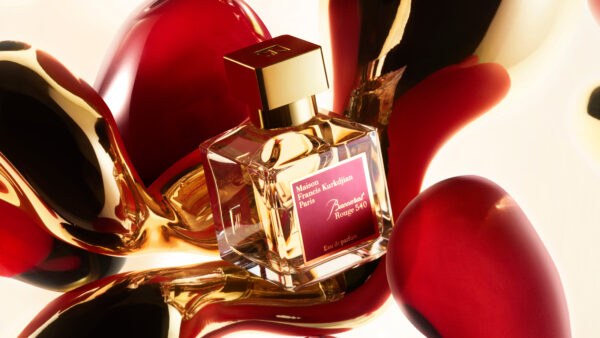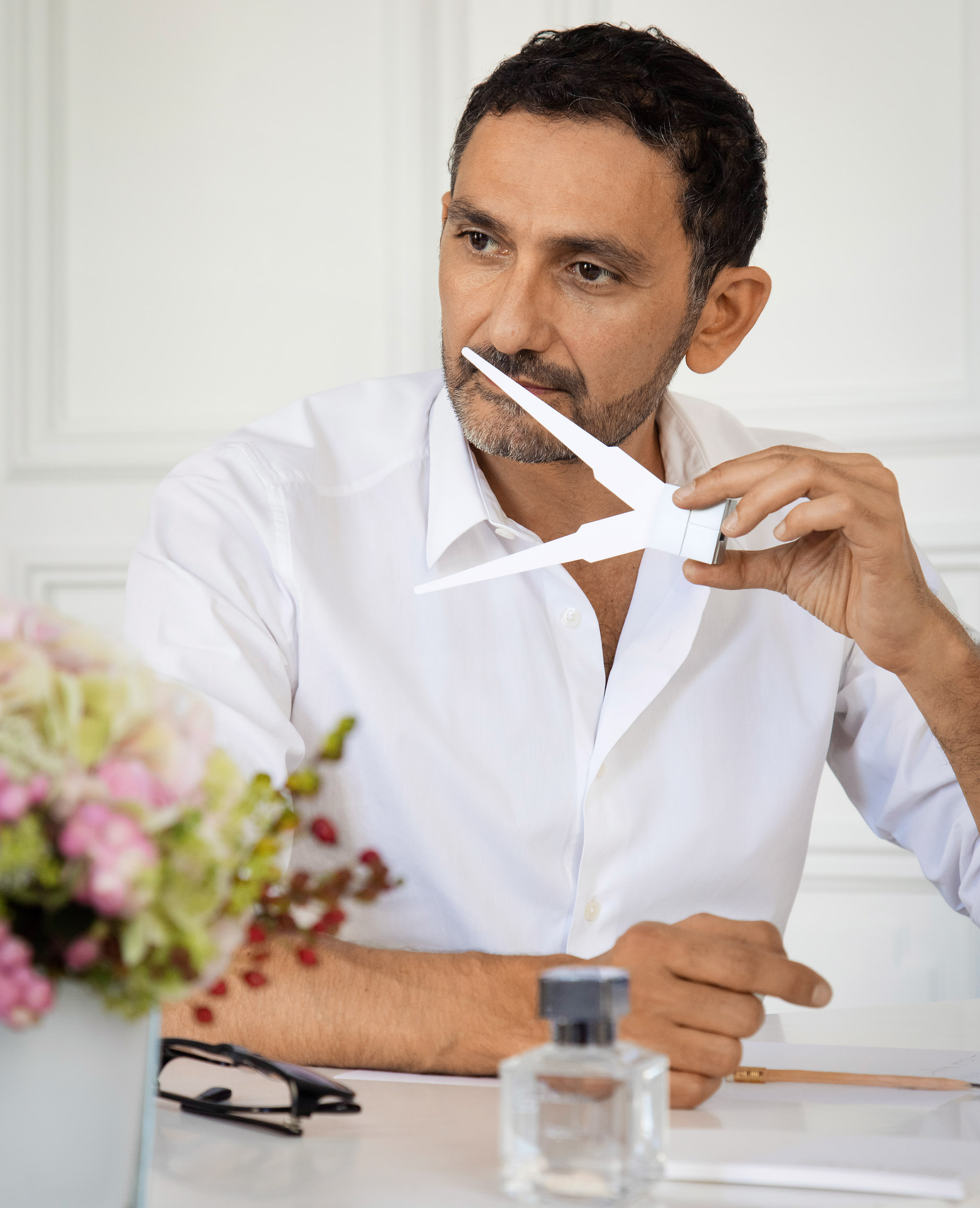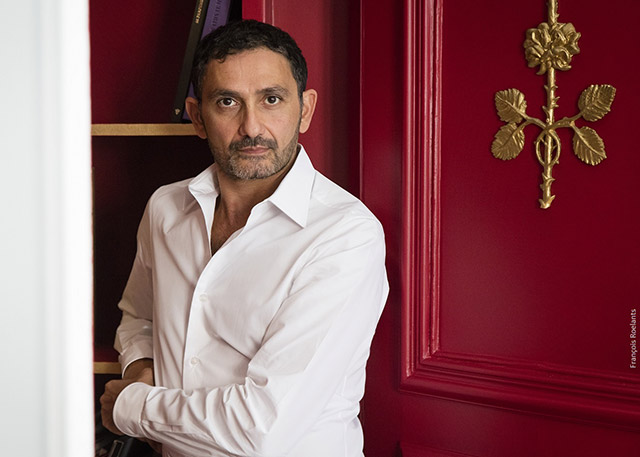by Christopher Atamian
“A great fragrance does not smell good; it smells beautiful!”
F. Kurkdjian
Read also
Francis Kurkdjian is considered by many to be the world’s greatest designer and creator of new perfumes and scents. Born in Paris in 1969, he is perhaps best known for creating the men’s fragrance Le Male for Jean Paul Gaultier in 1995, which became one of the world’s best-selling perfumes. He has since created more than 40 fragrances for major companies worldwide, including Elie Saab Le Parfum for Elie Saab; My Burberry for Burberry; L’Extase for Nina Ricci; Narciso Rodriguez for Her for Narciso Rodriguez, and Green Tea for Elizabeth Arden. He also recreated Marie Antoinette’s favorite perfume for the Palace of Versailles, going back in time to the early 17th century and the sources of perfumery. And in 2006, Kurkdjian redeveloped and updated Papier d’Arménie — little booklets of scented paper, which you burn like incense — for the “Year of Armenia in France.”
In 2009, Kurkdjian then co-founded the fragrance house Maison Francis Kurkdjian with Lebanese-French businessman Marc Chaya. It became part of the LVMH fashion juggernaut in 2017. Today its scents and affiliated products are sold worldwide. His unisex Baccarat Rouge 540, with notes of jasmine, saffron and cedar, was released in 2016 and has since become one of the biggest hit in perfumery.
In 2021, Kurkdjian was named the creative director for Dior perfumes. Like Karl Lagerfeld who managed to design Chanel as well as his own line, Kurkdjian has the energy and work ethic needed to successfully take on both jobs simultaneously.
In recognition of his contributions to the world of perfumery, he received the Prix François Coty for lifetime achievement in 2001 at 33. And in 2008 the French Government bestowed on him the “Chevalier des Arts et des Lettres,” title, one of the country’s greatest honors.
What I find most remarkable about Kurkdjian is the absolute passion that he has for perfumery: he works assiduously not just developing new scents but also carefully studying the history of his profession and trying to push the perfumery industry forward in innovative ways. He has worked in tandem with renowned artists to place scents side-by-side and at the same level as other arts such as painting or music, for example. He has also set up the unique “Fonds de Dotation Francis Kurkdjian,” (www.fondsFranciskurkdjian.org) a non-profit organization that funds innovation both within and outside of perfumery. His vision: ensure that his profession remains innovative and relevant in the future and thus moves the culture forward in ways unforeseen.
He recently agreed to a brief interview.
Baccarat Rouge 540 was such a viral hit. How did you feel about the fragrance’s success and how did it happen?
Success has one rule: coherence, “justesse” as we say in French. While composing a new fragrance, you may feel that it is truly creative, but success is impossible to predict. Baccarat Rouge 540 was a creative collaboration with the house of Baccarat crystal to celebrate its 250th anniversary. I had carte blanche to capture the spirit of the crystal house in one scent.

Maison Kurkdjian’s Baccarat Rouge 540 (Photo courtesy of Maison Francis Kurkdjian)
The making of the iconic red Baccarat crystal guided me throughout my creative journey. I wanted to translate the feeling of brightness and the density of crystal, to create a contemporary fragrance by its name and its scent, almost avant-garde, that would reflect the essence of Baccarat and push the brand in the future. The scent was not about the past 250 years, so much as a celebration of the upcoming 250!
What does the number 540 signify?
Crystal is obtained through the interplay of three components: minerals, fire and craftsmanship. Powerful and distinguished, the name Baccarat Rouge 540 evokes the metamorphosis of a clear crystal mingled with 24-carat gold powder, brought to fusion at 540 degrees Celsius, which produces a glowing scarlet appearance. The bottle of Baccarat Rouge 540 extrait de parfum actually echoes this scarlet shade
Can you please briefly explain its composition and what makes it so special?
The composition is straightforward while its olfactory family is rather avant-garde. I wanted this scent to convey the codes of our era. Sweetness was the first must have. However I stopped using all the raw materials together which were used beforehand — so I started from a blank page at this point.
The scent is my interpretation of three inherent components of crystal: the mineral breath, the breath of fire and the breath of craftsmanship. As if human hands were conversing with the magic of nature. Like a true alchemy of senses, its graphic, highly condensed olfactory signature delivers floral, amber, and woody notes. Airy jasmine facets and intensely radiant saffron carry the mineral notes of ambergris and the woody, lightly spiced tones of red cedar.
The scent is very contemporary yet there is a timeless feeling to it. Its trail is unique, persistent and recognizable from among any other fragrance. It is abstract. It’s not about flowers or amber only. The ingredients disappear to leave only their trail, with an impressive volume.
More generally, what makes for a good perfume? How do you come up with fragrances? What are your favorite fragrances that you created and a favorite that isn’t signed Francis Kurkdjian?
A great fragrance doesn’t smell good; it smells beautiful. That is one step further from a good scent, with artistry and feelings. And a great fragrance arises from a great story. A good technique is needed to achieve your idea, but the idea itself is not enough. A fragrance must have a distinctive olfactive signature and be diffusive at the same time. I often compare the art of perfumery to ice-skating. In skating you receive one mark for technique, and another for artistry. You need both to be excellent, just like in perfumery. On the other hand, a good fragrance is memorable, has a strong signature and lasts long. This may seem easy but it’s actually the most difficult thing to achieve.
I always approach my creations with the same process. When I create a new scent, I first focus on a general feeling. I try to envision the final image for the fragrance, and I always start with the name. The name sums up what I want to say with my perfume, the story I want to tell, my inspiration. It’s like the title of a book, it helps guide me on my creative path. Words are extremely important to me. After this, I start writing the formula. My creative process is never driven by raw materials. They are pieces of the puzzle, but I focus on the overall scent.
There are two phases to creating a perfume: the first is a period of reflection and creating the name and guidelines for the scent. After that during the second phase, I begin the composition and spend time in the lab to create the formula.
To be honest I don’t have any favorite scents, whether from my house or from other brands. As a perfumer, when it comes to my personal taste, the fragrances I have in mind for the future are always the most intriguing and appealing to me. The most exciting part of life, in fact, is what lies ahead in the future.
How is the process when you create fragrances for Christian Dior compared to when you are doing so for your own house?
The creative process remains the same for both houses. Only the subjects of inspiration differ.
In the past decade (maybe even earlier with Calvin Klein’s CK One), the lines of men’s and women’s scents have sometimes blurred. What do you think about gendered perfume?
You mention CK One, from the early 1990s, but non-gendered fragrances date from the 17th century! Eau de Cologne is the first unisex/non-gendered olfactory form! Traditionally, some notes have been used only for feminine or masculine fragrances because of some cultural preconceptions. Rose is one example; it’s been linked to women’s fragrances. However, roses have been used in masculine fragrance as well, “hidden” by stronger, spicier, or woodier notes. For me and for my work this is totally irrelevant. Notes have no gender; ingredients are merely a tool to obtain certain results. What matters in the end is the formula, not any single ingredient. A tailor can turn silk into a men’s tie or an evening gown; the perfumer does the same with the ingredients she uses. The Gentle Fluidity duo is a demonstration of that — two unisex eau de parfums with dramatically different olfactory signatures, created with the exact same 49 ingredients. And with L’Homme À la Rose Maison Francis Kurkdjian was the first fragrance house to give men the power to proudly wear a rose scent: it can be perceived in the scent’s trail and is unmistakably masculine.
You have been referred to as one of the greatest living noses. How do you become a “nose?” Do you train or are you born with it?
Above all, I am not a nose (laughs) … A nose does not create, it is just a transmitter of emotions. I’m a master perfumer and artistic director. During my childhood I never thought about becoming a perfumer. After a short-lived career as a classical ballet dancer, I pursued couture, but unfortunately that didn’t work out either. At age 14 I read an article about several perfumers in a magazine, and I found out that the couturier was not the one who was creating his perfumes. There were people behind it, who practiced a very special art. Perfume is intimately linked to the couture world; it’s so close to the skin, even closer than a piece of clothing. After reading that story, I made up my mind to become a perfumer and when I was old enough, I attended ISIPCA, the perfumery school in Versailles, France. I had found my true calling. After school, you have to train and work, a lot! It usually takes about 5 to 10 years before you are able to create a solid fragrance alone. However I did not follow this timeline, as I created my first internationally renowned scent 6 months after I left school. No matter what, you first have to learn the basics.
The world of scent is like foreign languages: you must start by learning the alphabet — meaning the raw materials — one by one, describing them, classifying them with your own words and feelings. Then you create words (small fragrance accords) and then sentences. But it is like any other art form. Everybody knows how to write, paint, draw, and sing, but not everybody is an artist who creates new things… Not everybody knows how to express novelty and create new forms.
You’ve spent a lot of time living and working in New York City but Paris remains your true love. How do both two cities inspire you creatively?
I liked the years I spent in New York City when I was a young perfumer. But Paris is my hometown, to live and to work. That’s why Maison Francis Kurkdjian is a tribute to Paris, its magic and spirit of freedom. This city is the heart of my inspiration and each of my perfumes is part of a fragrance wardrobe that I build year after year. My travels take me away, but they also serve to bring me back to Paris and its heterogeneous population, to the light and the shade of its monuments, the grey of its rooftops and the bursts of magic as its golden spires punctuate its incredible skyline. Above all I love the cultural life in Paris: the museums, the classical and modern theater, the architecture which varies from very classic to modern. For example, I have a view of the new iconic tower by architect Renzo Piano. Paris inspires the universe of my fragrance house: like the grey zinc and gold caps on our bottles. The inspiration for the flacon comes from an antique bottle, to which I added the house monogram, like an artist’s proud signature on their work.
My latest fragrance, 724, is actually a tribute to New York, Paris and all the big cities I have lived in. I pictured 724 accompanying you through the city or urban environment. It’s not the scent of the streets, or the subway, or something figurative about the city, it’s about you and how you feel and what type of smell you’d like to wear when you are surrounded by urban vibes. Something comfortable and fresh — the edge of cleanness, if you will.
You seem to have accomplished so much already within the fragrance world. What are your remaining goals and where do you see yourself creatively or otherwise in 10-15 years?
Bringing the world of scent to a new level of consciousness, finding new ways to wear or experiment fragrances is really something I am increasingly looking at in the future. I believe it is part of my mission in the world of fragrances to open new paths and to question my era about the importance, meaning and place of fragrances. I believe it is also the modernity of it: breaking down boundaries, rather than simply rules.
Please tell us about your link to Armenian culture and to your Armenian roots.
My parents were born and raised in France. They went to French schools and so did I. That doesn’t mean that we don’t stay in touch with our Armenian origins, but they are far away from us in a certain way. I’m not sure if they have inspired or influenced my career. I am sure deep inside there must be an influence, but I can’t express it.



























































